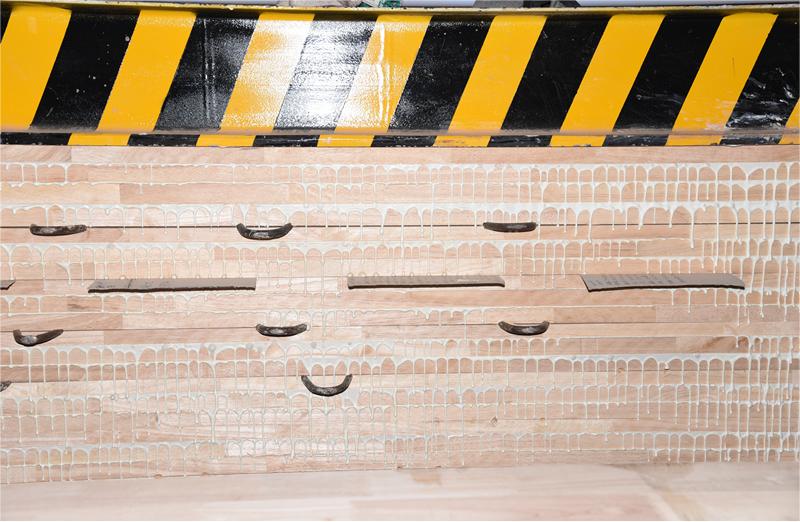Anyone familiar with the woodworking solid wood laminate glue laminate process should know that after the board is coated with solid wood laminate glue, the board needs to be pressurized. The purpose of pressurizing the board is to allow the glue to better penetrate the board and form glue nails to ensure that the boards using panel glue can achieve the adhesive effect.
Below, we will explain the matters that need to be paid attention to before, during, and after pressurizing the panels:
Before pressing the substrate with solid wood laminate glue
Before using solid wood laminate glue to pressurize, we need to pay attention to: the skill and time of pressurization. The specific pressurization method is determined according to the conditions of the machine, but it is necessary to ensure that pressure is applied evenly at a pressure point every 30-50cm.

The pressurizing time is generally 1-3 hours (the specific time depends on objective factors such as substrate hardness, ambient temperature, and ambient humidity). In environments with low ambient temperature and high humidity, the pressurization time needs to be appropriately increased according to the actual situation.
When pressing the substrate with solid wood laminate glue
During the process of applying solid wood laminate glue to the base and applying pressure, it is strictly forbidden to pull out the wooden strips; if the wooden strips are pulled out, the pressure must be relieved before the wooden strips can be reset. When applying pressure to the wooden strips that need to be spliced, you need to always pay attention to whether there is glue overflow in the seams of the base material. If there is glue overflow, it means that the amount of glue applied is normal. If there is no glue overflow, check whether there is insufficient glue and make corrections immediately.

After pressing the substrate with solid wood laminate glue
After the solid wood lamination and pressurization are completed, to observe whether the substrate is deglued, the boards need to be stacked and cured. According to the actual conditions of the wood and environment, it is necessary to ensure that the product is cured for a certain period (more than 18 hours in summer and more than 24 hours in winter) before proceeding to the next processing step.



